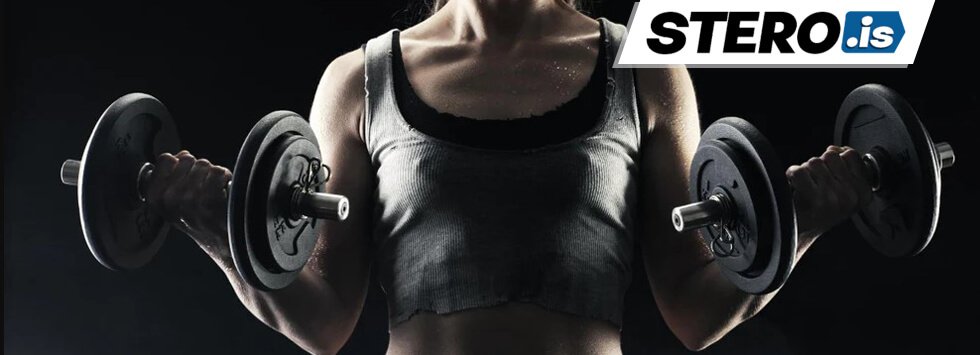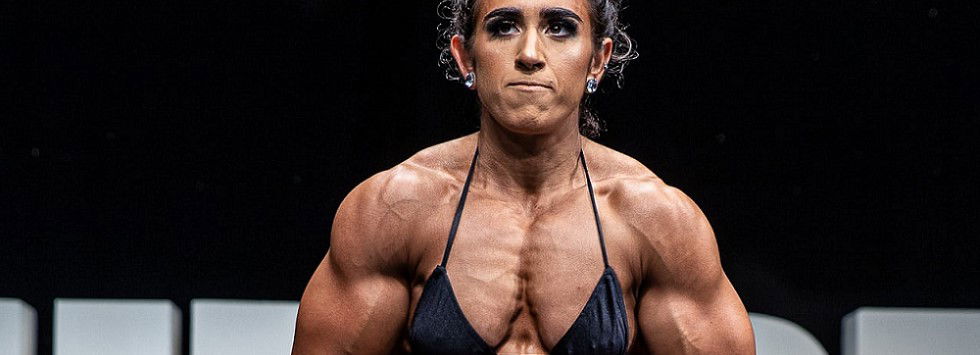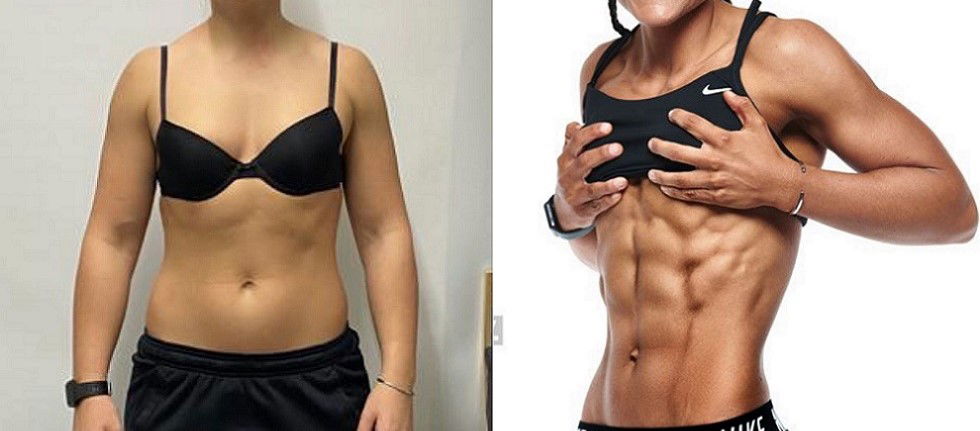
Now here’s the thing, before you ever do anything meaningful in life, it is important to spend some time researching to know if it is worth doing or not. This life principle also applies to bodybuilding and even more so if you’re a woman looking to start bodybuilding today.
The first thing you need to know is whether or not the women’s bodybuilding workout program you want to kick-off is safe. The truth is, bodybuilding like any other sporting activity in life has its risks, but your understanding of the sport including what you hope to gain from it, why you want such gains, and how you should go about achieving the bodybuilding gains – will go a long way in ensuring that you apply yourself in a safest way possible every time you run your bodybuilding workout sessions.
In this post, we take you through the whole process of how to start bodybuilding as a woman, how to structure your workouts, and the expected results from your bodybuilding efforts. But first off, we’ll start with an overview of what bodybuilding is all about.
I. What Is Bodybuilding?
Bodybuilding can be defined as a sport aimed at improving the physical attributes of the bodybuilder and by extension enhancing their sporting performance.
Bodybuilding involves a complete change in a person’s lifestyle to align with their intended bodybuilding goals.
On the most fundamental level, bodybuilding can be done for three primary reasons, namely for bulking, cutting, and performance enhancement.
Bulking involves running a training program and nutrition plan that encourages weight, and skeletal muscle gains. This training program will usually entail weight training or high-interval intensity training (HIIT) to promote muscle growth. The training will also be backed by a caloric surplus dietary plan, and rest days for recovery.
For a cutting women bodybuilding program, your primary focus will be on maintaining a caloric deficit nutritional plan while engaging in workouts aimed at burning body fat and promoting weight loss.
The third fundamental reason why bodybuilding is the go-to sporting activity for women, is the performance-enhancing gains that it offers. Women bodybuilding workout for improving energy levels, boosting strength, and stamina oftens involves a lot of cardiovascular exercises.
Bodybuilding can be for a person’s personal development without any commitment to competing in a competitive bodybuilding event.
You can just decide to make a lifestyle change and be committed to fitness and healthy living. If this is your desire, then bodybuilding is a great route to take.
However, your bodybuilding efforts can also be geared towards a minor or major bodybuilding competition where your muscular development and physique is put on full display for judges to scrutinize in a number of bodybuilding categories including fitness, figure, or bikini.
If you intend participating in a competitive women’s bodybuilding event, then taking to the sport of bodybuilding will be the right thing to do going forward.
II. Women Bodybuilding: How Do You Start?
Now that you have a basic idea of what bodybuilding is, you might now be wondering how to start. Well, as a beginner it is important to have an open mind and seek the guidance of people that are experienced in the sport of bodybuilding.
That being said, here are six things you need to know before you start any women’s bodybuilding workout program.
#1. Align yourself with a trainer:
Let’s face it, you just decided to start a women bodybuilding program, so what exactly are you going to do? What exercises do you need to do? Why do you need those workouts? What meals do you need for your training? Do you need supplementation?
It is very unlikely that as a novice, you would be able to answer all these questions on your own, even if you’ve done some private research. You will still need the assistance of a bodybuilding trainer, someone that has been in your position before, and has experienced the good, bad, and ugly of bodybuilding.
The bodybuilding experience that you can tap into from a trainer can’t be quantified, so you should first align yourself with a qualified bodybuilding coach before you commence with any program.
This coach will serve as your mentor and give you valuable advice on the type of workout plan that would suit your respective bodybuilding needs, and goals.
Also, this trainer would be able to advise you on the best possible dietary and nutrition plan that would be suitable for your bodybuilding program.
Your coach will motivate you when you need it, scold you when you deserve it, and hint you on what you need to succeed in your training.
#2. Keep a bodybuilding journal:
One common mistake newbies make when they start bodybuilding is that they fail to keep a record of their workout sessions, rest days, and diet.
This on its own accounts for why many bodybuilders are left disappointed and chicken out early into their program. The fact is, if you don’t keep track of your bodybuilding activities, you’d find it hard to know if you’re making progress or not.
You’ll also be unable to know when you need a rest to recover or when you need to increase your weights for example. In addition to this, you’ll be unable to know if you’re maintaining a balanced diet, calorie surplus, calorie deficit, or eating clean.
Without having a journal, you’ll have no reference point to fall back on to help you improve all aspects of your bodybuilding program including your training, diet, and supplementation.
In a nutshell, there may be little or no difference in your women’s bodybuilding before and after results which frankly would be a shame after all the time, and effort you spend on your respective bodybuilding program.
#3. Weight training works a charm:
Many beginners are of the opinion that training is something reserved for advanced level bodybuilders.
Well, that take couldn’t be farther from the truth, as weight training is available for all levels of bodybuilders.
What is not advisable for newbies, is to start off their weight training lifting heavy.
Weight or strength training without a full understanding of the need for lifting weights and how to maintain proper form while you do,can actually be counterproductive to your bodybuilding efforts, as it more often than not leads to injuries.
It is important that when you decide to begin a women bodybuilding workout, you incorporate weight training as part of your routine, as this will help to enhance your overall muscle profile as weight training engages a lot more muscle groups than regular exercises while also improving your range of motion, flexibility, stability, strength, and endurance.
#4. Success needs time:
It is important to note that we’re all not the same in physique, and our bodies react to physical workout differently.
Many factors can contribute to how your body reacts to your bodybuilding efforts including your genetic makeup, age, and the volume of your workouts.
However, regardless of your peculiar circumstance, you should know that your bodybuilding success takes time and you should always try to give yourself enough time to prepare, and build your skeletal muscles before any bodybuilding competitive event.
But while people are different and it takes time for you to be ready to compete in an event, you should typically give yourself anywhere from 12 to 14 weeks of intense, consistent bodybuilding diet and workouts in order to be ready on time for any event.
#5. Patient is key:
The key to safety in bodybuilding for women lies in your patience. Most injuries encountered by bodybuilders occur when they do not stick with a program that is tailor-made to their bodybuilding needs.
While it is not uncommon for people to be impatient when it comes to bodybuilding results, it is important to know that it takes time and patience before you start to see the bodybuilding gains you hope for.
What matters above all is your consistency and dedication to training, recovery, and maintaining a program-specific nutritional plan.
#6. Rev things up a notch:
You should know that while lifting heavy as a bodybuilding novice is not advised, you should be prepared to move away from your comfort zone and gradually increase your weights, sets, and reps.
Your body naturally adapts to the training that you subject it to. You tend to build up your strength and stamina levels when you up the ante on your training, but it has to be done in a deliberate and conscious manner with a high regard for your safety.
III. How Do Female Bodybuilders Structure Their Workouts?
A typical women’s bodybuilding program may consist of 60 minutes of strength training with 30 to 120 minutes of cardio twice daily.
When it comes to strength training, you can define your training days by virtue of the muscle groups or body parts you intend focusing on for the training day in question.
The separation of weight training days is known as a “split”. A 3 to 5-day split that you could adopt today will see you training your Arms, Back, Chest, Shoulders, and Legs within the days dedicated to training while you have at least two days available for rest and recovery.
For example,
A 3-day split:
- Day 1: Arm and Shoulders workouts
- Day 2: Rest
- Day 3: Back and Chest training
- Day 4: Rest
- Day 5: Legs workout
- Day 6 and 7: Rest
A 5-day split:
- Day 1: Arm
- Day 2: Back
- Day 3: Legs
- Day 4: Shoulders
- Day 5: Chest
- Day 6 and 7: Rest
Note that this is just an example, and your respective training should be tailored to meet your peculiar bodybuilding needs, and goals.
Alternatively, on the guidance of your trainer, you can run a push, pull and leg workouts during the week.
For example,
- Day 1: Pull (Back and Arms – biceps)
- Day 2: Legs
- Day 3: Push (Chest, Shoulders, and Triceps)
- Day 4: Pull (Back and Arms – biceps)
- Day 5: Legs
- Day 6: Push (Chest, Shoulders, and Triceps)
- Day 7: Rest
Before you run any weight training regimen, you first need to warm up. Your warm up ensures that your entire body is fully in-tune with the rigors of the weight training and high-interval intensity workout.
For each training day and in exercising the body parts designated for the day, you should run between 3 to 4 sets of exercises with 8 to 12 reps per set.
When you workout, it is best for you to begin with compound exercises which ensures that you engage multiple joints. Somenpopular compound exercises include deadlift, bench press, and squats.
After running compound exercises, you can then progress to performing isolation exercises where you engage a single joint in relation to the body part you are training on the day in question.
For example, on a leg day, you can try isolation exercises like leg extensions while on an arm day, you can perform bicep curls. When lifting weights, you should also note that you should lift between 60 to 70 percent of your one repetition maximum (1RM) weight which is that weight class that you can only lift once before requiring a rest.
By lifting 60 to 70 percent of your 1RM, you will promote skeletal muscle growth while lifting at your 1RM or a weight closer to it is great if you want to build your power, stamina, and strength.
Supersets are also welcomed in your bodybuilding program where you perform a couple of exercises (back to back) that target a particular muscle group with very little to no rest time between each exercise.
IV. Women bodybuilding before and after results
This is really subjective and depends on the genetics, age, training goals, workout volume, diet, and supplementation of the bodybuilder amongst other factors.
Very rarely do you witness quick gains, but with consistency in your training, diet, recovery, and supplementation, you should experience definite positive changes in your muscle profile, body composition, and overall athletic performance.
Conclusion
You can train in the safest possible way when you take the advice of your bodybuilding coach and run a training program that meets your peculiar bodybuilding needs and goals.
You should remember that your diet and rest days are just as important as your workout routine, as your nutrition provides you with the energy fuel needed to execute your workouts while your rest days help you to recover from the rigors of an intense training day or week.
If you stay patient, keep a training log book and maintain a proper diet in line with your bodybuilding goals amongst other things, you are sure to be a successful bodybuilder in time. You can get free coaching tips from an IFBB PRO right here.





Leave a Reply